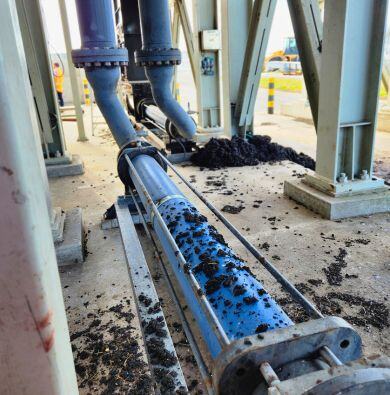Pump Types
Auto Prime
Air-operated
Concrete Washdown
Dredge Pumps - Dewatering
Dredge Pumps - Sludge & Slurry
Dredges
Flexi, Trash & Diaphragm
High Head Pumps
Handy-sized Pumps
Lamella Settling Tanks
Peristaltic
pH Correction
Piston Pumps
PTO (auto prime)
Centrifugal
Primary Sludge
Progressive Cavity
Shore-mounted
Stirrers
Submersibles
Proportional Dosing
Settling Tanks & Bag
Submersibles - Drainage
Submersibles - Slurry & Sludge
Stirrers - WWTP
Trash, Flexi & Diaphragm
Water Quality Monitoring
Wellpointing
Chemicals
Food Processing
Fuels & Oils
Hot Oil
Hot Water
Hygienic
Marine
Solids Handling Pumps
Vacuum & Blowing
Viscous Fluids Pumps
Wastewater

Comprehensive water treatment and monitoring solutions
Primary sludge pumps
Reduce downtime for maintenance
Ultra-low maintenance pumps
Wangen pumps are recognised globally for their reliability and long service life. Wangen’s focus on precision engineering and innovative design has simplified the maintenance and operation of their progressive cavity series’.
Low noise blowers
Dargang blowers deliver low noise, low maintenance and high efficiency to the aeration and mixing process. The inlet and outlet are constructed as silencers to reduce noise and casings for the impeller and motor are individually cast. A maintenance-free shaft seal separates motor from impeller.
Overview of our Primary Sludge
This pump is designed for precise conveying and dosing in wastewater treatment plants. It features a durable, wear-resistant flexible joint that requires no oil filling, ensuring maintenance-free operation and preventing media contamination
- Series: KB10 (Plastic)
- Flow Rate: 0.5 up to 200 l/h
- Series: KB22S (Cast Iron)
- Flow Rate: 200 up to 4000 l/m
- Max Pressure: 16 bar
Developed for ease of maintenance, you can change wear parts of the Wangen Xpress with the pump still in your pipeline. Suitable for low-viscous media.
- Series: Xpress
- Power: 7.5 – 18.5kW
- Speed: 152 – 221rpm
- Max flow: 102m³/hr
- Max pressure: 6 Bar
Wangen produces an extensive range of hopper feed pumps for slurries and pastes with high solids content (KL-R Series) and dewatered sludge (KL-RU, KL-RQ, KL-RS and KL-R Triplex models).
- Max flow: 160m3/hr
- Max pressure: 48 bar
- Max solids: 45%
- For extremely dry or lumpy material
Low-noise, low-maintenance, high-efficiency side channel blowers to aid aeration and mixing process of primary sludge in wastewater treatment applications.
- Max airflow: 4.4m3/min
- Noise: 52 - 73dB
- Max vacuum: 250mbar
- Max compression: 260mbar
Very low maintenance and highly dependable, Wangen KL Series of effluent PC pumps perform at very low rpm and features a unique, encapsulated cardon joint that is wear and maintenance-free.
- Power: 7.5 – 18.5kW
- Speed: 152 – 260 rpm
- Max flow: 60m³/hr
- Max pressure: 12 bar
Varisco J-series JS pumps are bare shaft. They can be long-coupled on a baseplate with your choice of drive unit. Additional options include:
- Inverter
- Flange kit
- Automatic greaser
- Zine anodes
Questions? We'll get back to you within 24 hours
In the field
Here are some examples of our solutions being used.
Read Sludge & Slurry Articles
They brought their mechanics, they didn't just dump it and leave….couldn't have done it without them to be honest
This sort of unique system you set up is what sets you apart from others in the Market
I had an amazing experience with Prime Pump at the Transmission Gully ... will recommend you guys anytime and anywhere.
You guys had our backs from the get-go and stood beside us and persevered.
We called for a different type of solution…... We were pretty happy with what's been delivered
Prime supplied us with the best solution for hire and the instant availability was what we needed… We certainly will be using them in the future
Make an enquiry
FAQ
At Prime Fluid Management, we understand that every fluid management challenge brings unique considerations. Here, you’ll find clear, practical answers and expert guidance to help you maximise uptime, achieve regulatory compliance, extend equipment life, and implement the most effective solution for your site.
A slurry pump is designed to move mixtures of liquid and solid particles where the liquid component helps the material flow. It is built with abrasion and corrosion resistant materials and a robust design to handle the wear from suspended solids.
A sludge pump is designed to handle much thicker and stickier material known as sludge which has a higher solid content. These pumps often use positive displacement or slow moving mechanisms to avoid clogging and manage dense viscous fluids.





